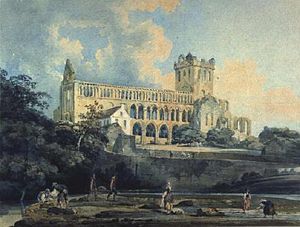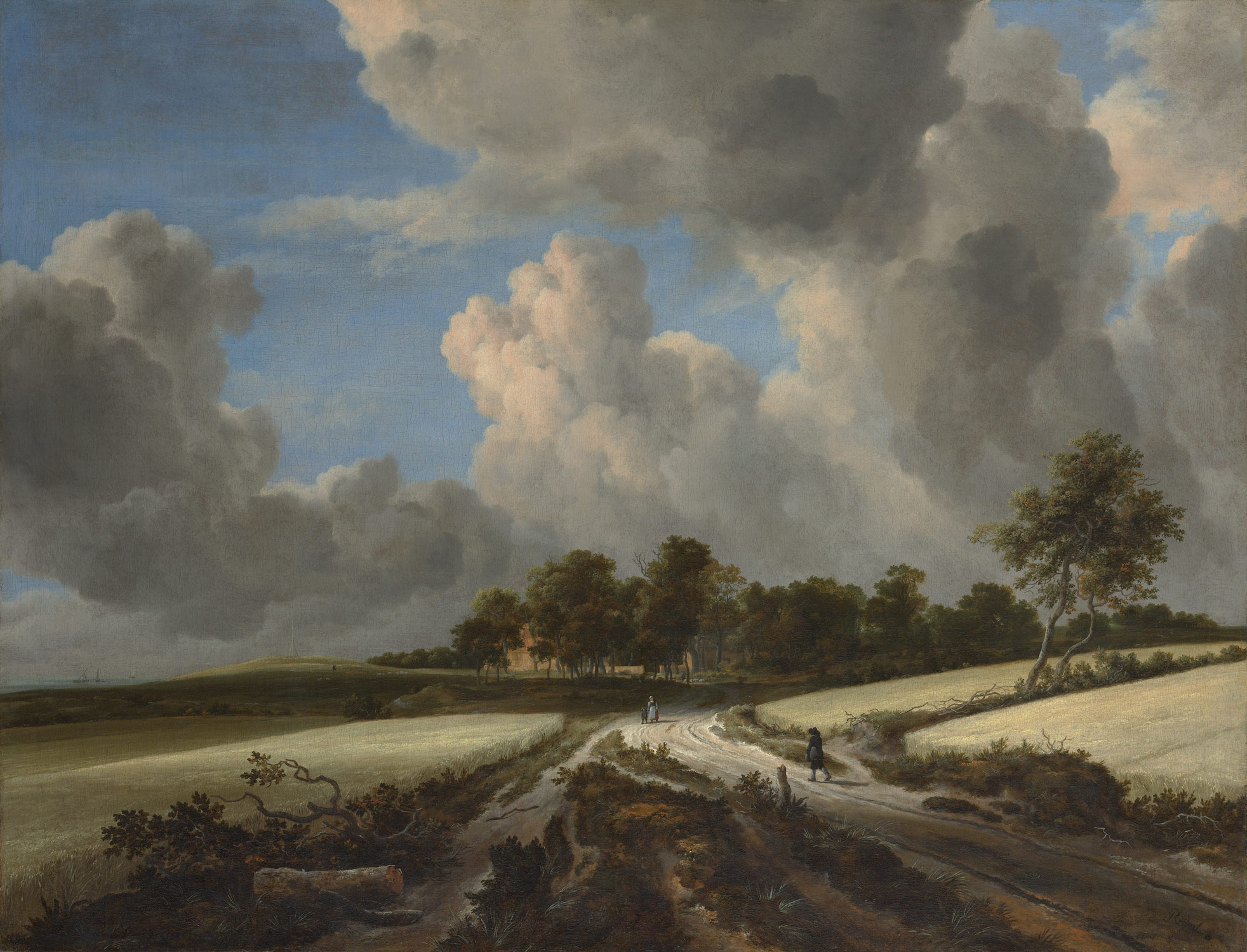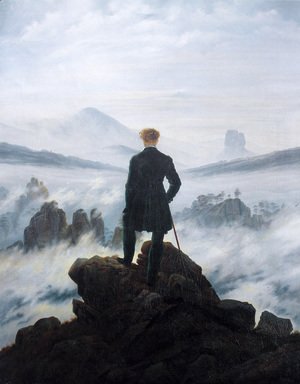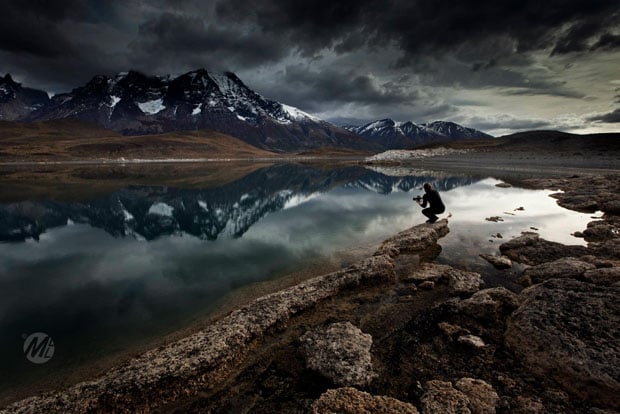Using internet search engines and any other resources, find at least 12 examples of eighteenth- and nineteenth-century landscape paintings. List all of the commonalities you can find across your examples. Consider the same sorts of things as you did for the sketching exercise at the start of Part One. Where possible, try to find out why the examples you found were painted (e.g. public or private commission). Your research should provide you with some examples of the visual language and conventions that were known to the early photographers.
Now try to find some examples of landscape photographs from any era that conform to these conventions.
Collate your research and note down your reflections in your learning log
Conventions of 18th and 19th century landscape paintings
The genre of landscape painting was developed in Flanders and the Dutch painters developed this style to their advantage (image 4) and dominated and influenced other artists. This style is known as veduta and Canaletto successfully painted grand, large scale landscapes in this style for the tourist market of the wealthy embarking on their “Grand Tour” (image 1) https://en.wikipedia.org/wiki/Veduta .
Many 18th century landscape paintings are primarily in the Rococo style and is dominated by male artists. By the 19th century female artists were beginning to appear on the art scene (image 6).
The use of light and decorative French style developed in France and in reaction to the grandeur of the Baroque style which is characterised by great drama, rich, deep colour, and intense light and dark shadows. These influences can be clearly seen in the work of Constable, Turner and Friedrich (images 7, 9, 11).
Rococo on the other hand is much lighter and frivolous. Jean Antoine Watteau developed a new genre of painting called fêtes galantes, and depicted courtship parties (image 2) https://news.artnet.com/market/a-brief-history-of-rococo-art-32790 which influenced the Rococo style.
However, surprisingly it is Canelleto through his grand landscapes of traditions and atmospheric effects is thought to have influenced the development of the Impressionist movement of the 19th Century https://en.wikipedia.org/wiki/Canaletto (images 8,10).
The artists who became known as Impressionists moved away from the previous traditions of painting of the past taking their subjects from the present rather than the past, reflecting on society of the day and modern life (Adams S. 1989).
In conclusion. Although styles and influences change all of the artists employed the conventions and traditions of the early landscape artists. They used the building blocks of land, sea, sky and sea, depicting manicured or cultivated nature. If activity is not central to the image (images 5,7,9). They are all romantic, dramatic and many have dramatic large skies. All use light to increase the interest and appeal.












Photographers using the traditions of landscape paintings

Elizabeth Gadd is a Canadian photographer and grew up surrounded by a beautiful landscape. She has captured this dreamy and peaceful shot which is reminiscent of the Freidrich image (image 11) in the Rococo style.

This shot by Adrian Adams provides drama and romanticism and makes use of a dramatic sky in this shot. It is edited to mimic the texture and style of paintings.

Andrew is a Northumberland based photographer who produces images in the style of J.M.W. Turner. In doing so, like Turner he leaves it to the viewer to interpret the image.

In this shot of Garnet Lake, California, Adams uses the dramatic sky and mountains which clearly conforms to the traditions of the landscape painters. His use of light reflecting on the snow covered mountain further increases the interest in the shot.

Like Adams, Faye Godwin makes use of the dramatic sky and the rolling hills to create drama. The path leads our eye to the sky and the light reflecting on the tarn increases our interest.

If it’s drama we are comparing Deschaumes has it in spades. His use of the building blocks of sky, land, water and cultivated nature together with the glimpse of the photographer himself all adds to the conventions of traditional landscape images.
References
Adams S. (1989) The World of the Impressionists London, Thames & Hudson Ltd.
Erica Trapasso, (2013) A Brief History of Rococo Art. Artnews (website) https://news.artnet.com/market/a-brief-history-of-rococo-art-32790 (accessed 7.10.19)
Wikipedia Venduta, (website) https://en.wikipedia.org/wiki/Veduta (accessed 9.10.19)
Wikipedia Canaletto https://en.wikipedia.org/wiki/Canaletto (accessed 9.10.19)



